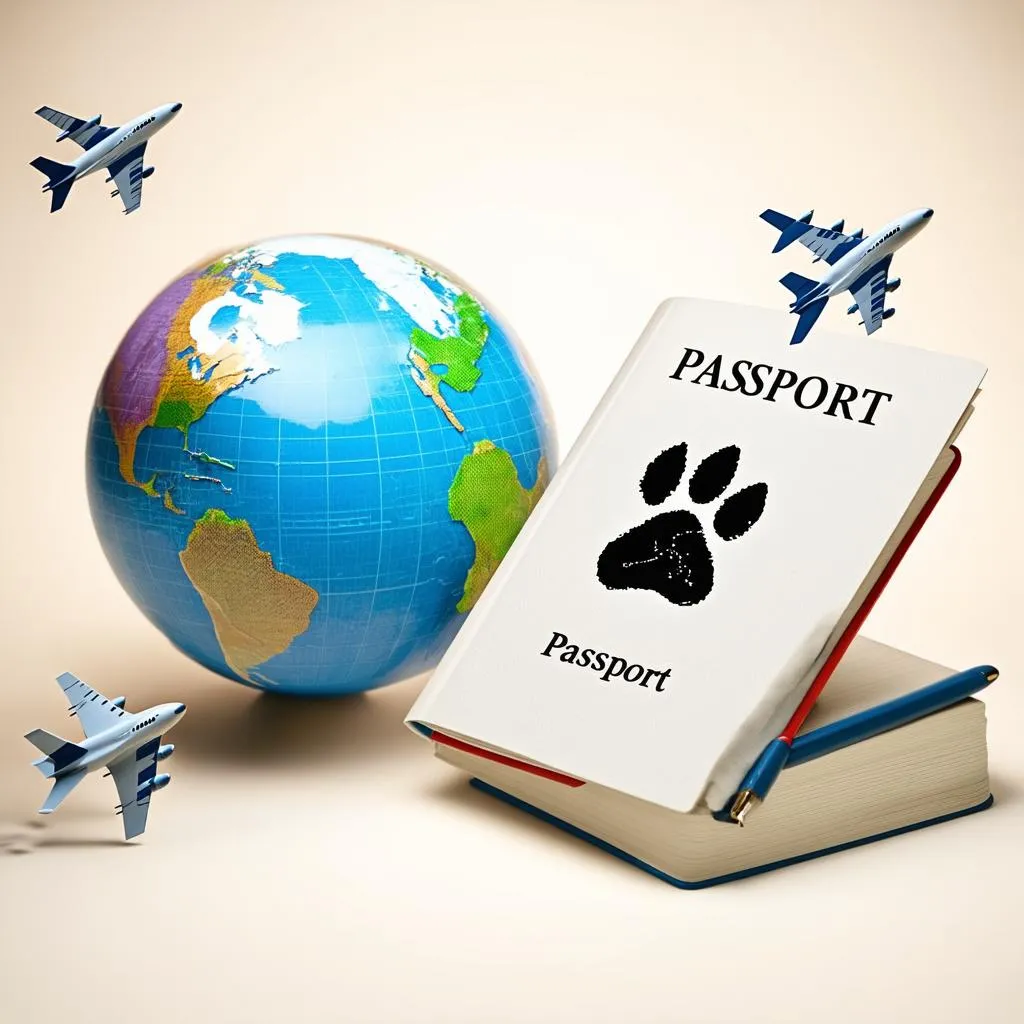Planning a trip abroad and can’t bear to leave your furry friend behind? You’re not alone! Many people consider their pets part of the family and want to bring them along on adventures. But before you book that plane ticket for your pooch, you might be wondering, “Do Animals Need A Passport To Travel?”
The answer, like most things related to international travel, is: it depends.
Navigating the World of Pet Passports
While the term “pet passport” gets tossed around a lot, it doesn’t actually exist in the same way as a human passport. There’s no magical document that grants your canine companion free passage across every border. However, there are specific regulations and requirements that vary depending on your destination country and the type of animal you’re traveling with.
Health Certificates and Vaccinations: Your Pet’s Ticket to Ride
The most crucial document your pet needs is a health certificate. This document, usually issued by a licensed veterinarian, certifies that your animal is healthy and free of contagious diseases. It also includes details about your pet’s vaccination records, which are equally important.
Some countries have strict regulations regarding rabies vaccinations and may require additional shots or blood tests. For example, if you’re planning a trip to the United Kingdom with your dog from the United States, you’ll need to ensure their rabies vaccination is up-to-date and they’ve undergone a tapeworm treatment.
Microchipping: Ensuring a Safe Journey
Many countries now require pets to be microchipped for identification purposes. This tiny chip, implanted under your pet’s skin, contains a unique identification number that can be read by a scanner.
Imagine you’re exploring the bustling streets of Bangkok with your dog, and they accidentally wander off. A microchip increases the chances of a happy reunion, as any veterinarian or animal shelter can scan the chip and access your contact information.
 Pet Passport
Pet Passport
Planning Ahead: Key Steps for International Pet Travel
1. Research Destination Requirements
Don’t wait until the last minute! Research your destination country’s pet import regulations well in advance. You can usually find this information on the website of their embassy or consulate.
2. Consult Your Veterinarian
Schedule an appointment with your vet to discuss your travel plans. They can advise you on the specific health certificates, vaccinations, and treatments your pet needs for your chosen destination.
3. Airline Regulations
Contact your airline to inquire about their pet travel policies. Each airline has its own set of rules and restrictions regarding pet size, breed, and in-cabin versus cargo travel.
Can You Travel to Florida With Your Pet?
Florida, known for its sunny beaches and theme parks, is a popular destination for travelers with pets. While specific regulations may vary depending on your mode of transport and your pet’s species, generally, you’ll need a health certificate issued by a licensed veterinarian within the past 30 days.
For more information about traveling with pets to different destinations, visit the travelcar.edu.vn website. It offers a wealth of resources and tips to ensure a smooth and enjoyable journey for both you and your furry companion.
 Dog on Beach with Sunglasses
Dog on Beach with Sunglasses
FAQs About Animals and International Travel
Q: What if my pet is an emotional support animal? Do they still need documentation?
A: While regulations regarding emotional support animals vary, it’s always best to have proper documentation, including a letter from a licensed mental health professional, to avoid any potential issues.
Q: Are there any breeds that are restricted from traveling to certain countries?
A: Yes, some countries have breed-specific restrictions. For example, breeds like Pit Bulls and Rottweilers may face import bans or quarantine requirements in certain destinations.
Q: My pet gets anxious during travel. Any tips?
A: Consult your vet about potential calming aids or medications. You can also make the journey more comfortable by using a familiar carrier and bringing along their favorite toys or blankets.
Conclusion
Traveling with your pet can be a rewarding experience, allowing you to share new adventures together. Remember, a little planning goes a long way! By researching your destination’s requirements, consulting your veterinarian, and taking necessary precautions, you can ensure a safe and enjoyable trip for both you and your beloved companion.
Are you planning to travel with your pet soon? Share your experiences and tips in the comments below! And don’t forget to explore travelcar.edu.vn for more travel-related insights and inspiration.
 Cat in Carrier on Plane
Cat in Carrier on Plane